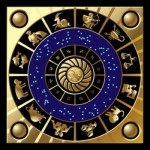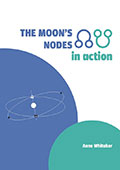This comment on my last post from Linda Leinen, a faithful and much appreciated supporter, is so interesting that I thought I’d turn it into the next post! Linda blogs at The Task at Hand and her writing is brilliant. Check it out….
From Linda:
This isn’t a criticism, or even a cogent observation, because there’s too much I don’t know about all this. But my sense of things, after my years in Africa, is that some differences in culture and world view are so fundamentally different that a synthesis, a grand, overarching explanation for human behavior, just isn’t possible.
Part of the difficulty may also be an irony. The worldview of many Liberians I knew more closely resembles that of antiquity than of our modern culture. We no longer speak of the gods controlling every aspect of human behavior and worldly events – but some of my friends saw gods everywhere, determining almost mechanistically what was possible.
If I framed it as a question, I suppose it would be – how does modern astrology deal with cultures that haven’t even made it to pre-modern, let alone post-modern? It’s really an interesting thought.
******
And an interesting question! I have been so busy dealing with the demands of the ‘real’ world this week that I haven’t had time to address your question in the virtual world until now.
Whilst reading the introduction to a new book pulling together the perspectives of a range of modern astrologers on Transpersonal Astrology, I came across this statement which strikes me as relevant in responding to your question:
“The emergence of a transpersonal perspective (bringing together insights from the fields of psychology, progressive spirituality, the human potential movement, non-reductionist science, and philosophy), is reflected….in....an increased awareness that life is far more complex than can be appreciated by our immediate senses…..There is a palpable eagerness to seek alternative ways to understand the human condition and to expand our experience of life’s great mystery…..
As humans….we are clearly enveloped within a system not of our design but of an intelligence that transcends and includes us, as if we are each nerve cells in a larger brain. Incorporating the transpersonal perspective is an act of yielding to this broader reality instead of choosing to couch the phenomena of astrology in only familiarly personal ways….”
(Transpersonal Astrology Explorations at the Frontier (2013) Produced and Edited by Armand Diaz, Eric Meyers & Andrew Smith, pp 1,2)
This transpersonal perspective can be seen as flowing into the broad category of ‘archetypal cosmology’ which I talked about in the previous post. This mode of seeing proposes that the great archetypal patterns shaping human behaviour both at the individual and collective level, patterns revealed in the inter-relationship between planetary cycles and earthly life, are in fact fundamental to the cosmos itself.
Viewed in this way, perspective on human culture in the broad sense, and individual life in the tiny sense, changes its locus from the personal to the transpersonal.
Thus the “grand, overarching explanation for human behavior” which you talk about in your question shifts: from the human world with its many, continually evolving viewpoints – depending on geographical location and mores – to locating all life on tiny planet Earth within the vast teleology of an unfolding and evolving Cosmos.
Thus a truly contemporary astrology can play its part, as Diaz, Meyers and Smith so eloquently put it, through “…. yielding to this broader reality instead of choosing to couch the phenomena of astrology in only familiarly personal ways….”
To ground this reflection in actual practice: as a contemporary, transpersonal astrologer I find it deeply supportive of my attempts to lead a meaningful life, to see the interweaving of the symbols in my personal horoscope with the ever-changing energies of the solar system in which we are temporally located, as an unfolding pattern charged with meaning, set in the context of a much Bigger Picture.
This challenges me to live out my tiny spark of energy in this vast Cosmos with as much conscious awareness and positive choice as I can manage.
My experience of clients coming to me for help is this: assisting them in seeing that this life’s grapples take place within a context of larger meaning where every positive effort – although we may not see its immediate fruit – helps the Bigger Picture to unfold, is greatly supportive to them.
Having a sense that our tiny lives are a potentially useful and creative part of …. life’s great mystery….may not remove life’s difficulties, but it certainly empowers both me and my clients in coping with whatever life on planet Earth chooses to throw our way.
Linda, I hope this goes some way toward answering your question! It may be a little longer than you were expecting….

800 words copyright Anne Whitaker/Armand Diaz, Eric Meyers & Andrew Smith 2013
Licensed under Creative Commons – for conditions see Home Page
.





















































